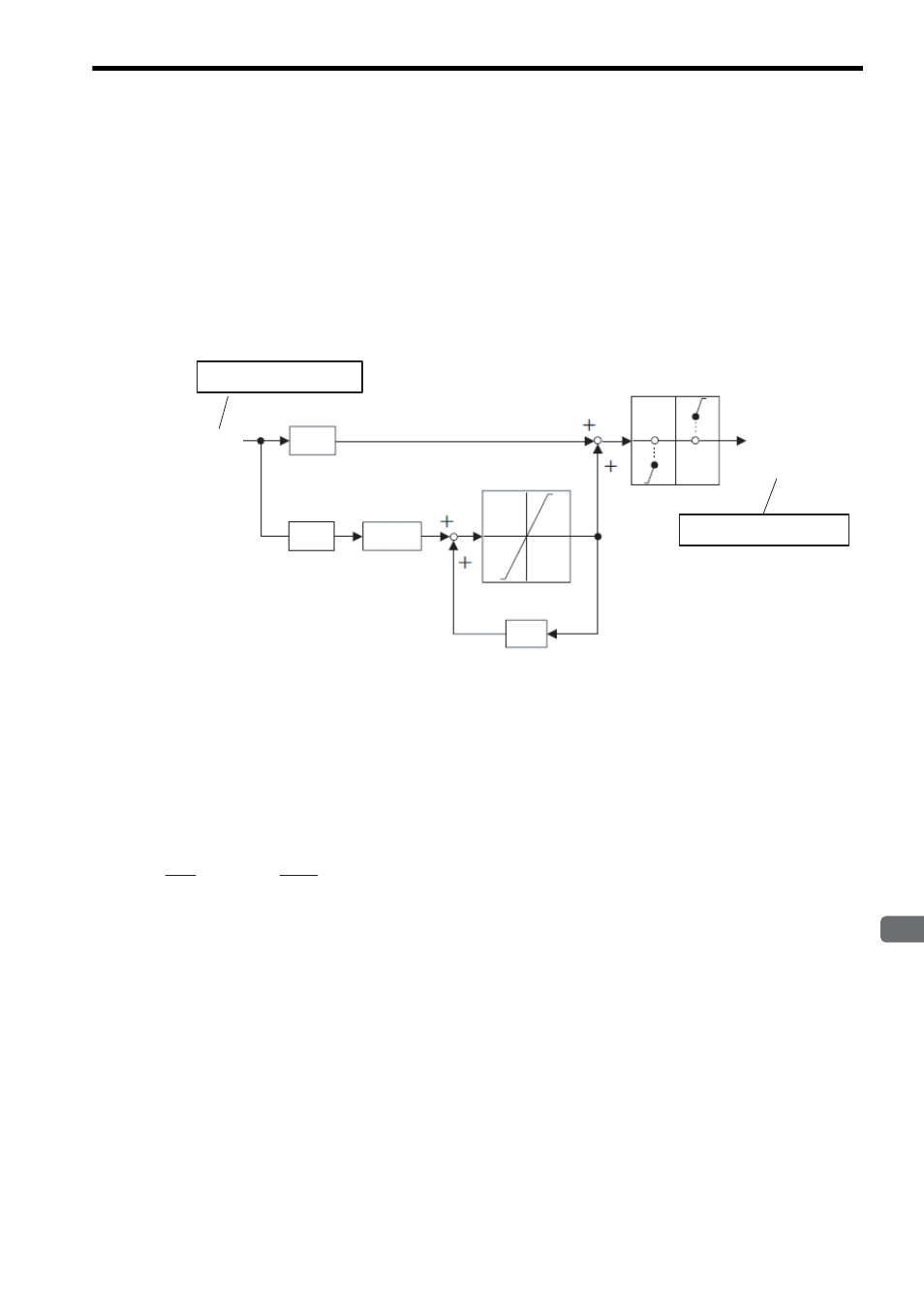4 pi control (pi), 1 ) operation – Yaskawa MP900 Series Ladder Programming Manual User Manual
Page 214

5.8 DDC Instructions
5.8.4 PI Control (PI)
5-145
Instructions
5
5.8.4 PI Control (PI)
( 1 ) Operation
When deviation X is input, the PI instruction performs P and I operations and a range operation based on predefined
parameters in a parameter table, and outputs the result as compensation Y.
When the reset integration bit in the parameter table is closed (turned ON), the PI compensation is calculated using an
I compensation value of 0.
The input value to the PI instruction can be an integer or a real number. Double-length integers cannot be used.
The structure of the parameter table is different for integers and real numbers.
∗ The range operation for the PI compensation is processed as follows if the P + I compensation crosses the PI
upper or lower limit (UL or LL), or the PI dead zone (DB):
If the P compensation and I compensation have the same sign (divergence)
→ The previous value is
retained for the I compensation value.
If the P compensation and I compensation have different signs (convergence to 0)
→ The I compensation
value is updated to a new value.
The operation of the PI instruction can be expressed by the following formula, where X (s) is the input value and Y (s)
is the output value.
= Kp + Ki
×
Deviation X
Compensation Y
(PI output)
Upper/lower limit for
I compensation
P compensation
I compensation Yi
Previous I compensation
Yi'
Ki
Kp
Ts/Ti
PI Compensation Value Range Operation*
(Upper/Lower Limit + Dead Zone A)
RCHK
RCHK
+ DZA
Input value for PI instruction
Output value for PI instruction
Kp: P (proportional) gain
Ki: I (integral) gain
Ts: Scan time
Ti: Integral time
Y(s)
X(s)
1
Ti
× s
